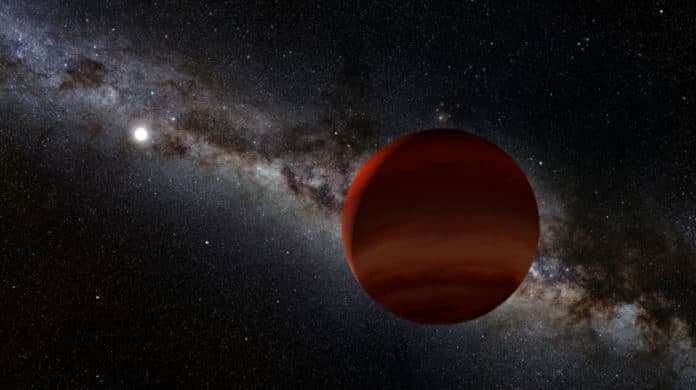With the help of W. M. Keck Observatory on Maunakea in Hawaii, the research team data-sleuthing volunteers participating in Backyard Worlds: Planet 9, a citizen science project, has discovered roughly 100 cool worlds near the Sun. These worlds are more massive than planets but lighter than brown dwarfs.
What’s more, these objects are among the very coolest known, with a few approaching Earth’s temperatures—cool enough to harbor water clouds.
Lead author Aaron Meisner from the National Science Foundation’s NOIRLab said, “These cool worlds offer the opportunity for new insights into the formation and atmospheres of planets beyond the solar system. This collection of cool brown dwarfs also allows us to accurately estimate the number of free-floating worlds roaming interstellar space near the Sun.”
Using Keck Observatory‘s sensitive Near-Infrared Echellette Spectrometer, or NIRES, instrument’s spectra, scientists measured the temperature and gases present in their atmospheres. Each spectrum is essentially a fingerprint that allows us to distinguish a cool brown dwarf from other kinds of stars.
Follow-up observations using NASA’s Spitzer Space Telescope, Mont Megantic Observatory, and Las Campanas Observatory also added to the brown dwarf temperature estimates.
Brown dwarfs are sometimes referred to as “failed stars.” Their low mass, low temperature, and lack of internal nuclear reactions make them extremely faint and extremely difficult to detect. Because of this, when searching for the very coolest brown dwarfs, astronomers can only hope to detect such objects relatively close to the Sun.
For this study, astronomers turned to a worldwide network of more than 100,000 citizen scientists. These volunteers diligently inspect trillions of pixels of telescope images to identify the subtle movements of nearby brown dwarfs and planets.
Backyard Worlds volunteers have already discovered more than 1,500 stars and brown dwarfs near the Sun; this discovery represents about 100 of the coldest in that sample.
Lead author Aaron Meisner from the National Science Foundation’s NOIRLab said, “The technical burden of downloading billion-object astronomical catalogs is typically insurmountable for individual investigators—including most professional astronomers. Thankfully, the Astro Data Lab’s open and accessible web portal allowed Backyard Worlds citizen scientists to query massive catalogs for brown dwarf candidates easily.”
“It’s exciting these could be spotted first by a citizen scientist. The Backyard Worlds’ discoveries show that members of the public can play an important role in reshaping our scientific understanding of our solar neighborhood.”
Data sets from NASA‘s WISE satellite as well as archival observations from telescopes at Cerro Tololo Inter-American Observatory and Kitt Peak National Observatory were also key to these brown dwarf discoveries.
Journal Reference:
- Spitzer Follow-up of Extremely Cold Brown Dwarfs Discovered by the Backyard Worlds: Planet 9 Citizen Science Project arXiv:2008.06396 [astro-ph.SR] arxiv.org/abs/2008.06396
